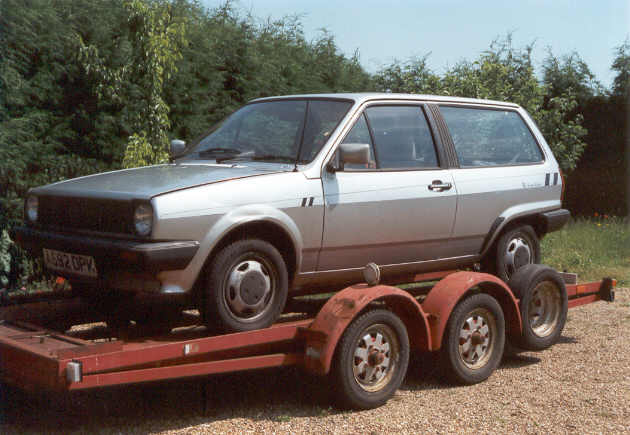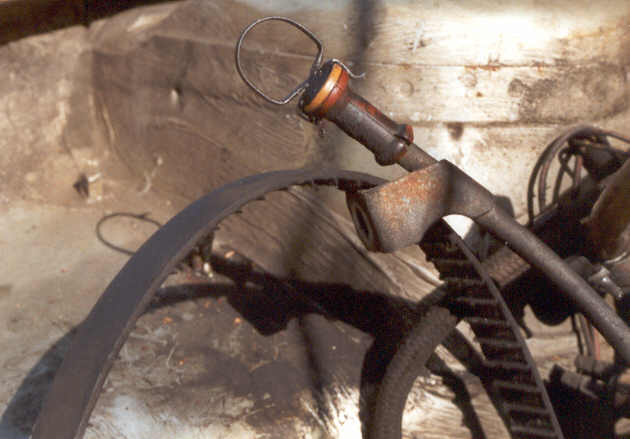![]()
I'm not quite sure why I got into this one. I saw a 1984 VW Polo 1300 on an Internet auction site. It was not far from my home, and wasn't attracting a lot of interest. Described as a runner, with no MOT but a failure sheet with nothing too major on it, I bid just £21 and it was mine - the first car I have ever bought unseen. A few days later I went over to see it. It was a bit scruffy but solid, and the engine sounded OK (although it wouldn't idle) so I trailered it home.

Doesn't look too bad, does it? But plenty of horrors lay in wait.
The original idea was to do as little as possible for the MoT, and see if I could get it drivable and road-legal for under £100 all in. But once I started work on it, the plan disintegrated. Blown head gasket, blocked crankcase breather, a damaged water pump which had almost destroyed the cambelt, rear brake shoes worn beyond the limit of adjustment, and various suspension bushes and balljoints which were badly worn but had been missed by the MoT tester - the bills quickly mounted up, and I ended up paying out around £300 for parts to get this little car back on the road.
It is now mechanically as close to perfect as a car this age will ever get, and drives beautifully, so I suppose even at just over £300 it still represents good value, but the project illustrates very nicely what can happen if you ignore the basic Bangernomics principles, and if I hadn't been able to do all the work myself, no question that this Polo would have ended up in a scrapyard. So what should I have done?
Lesson 1: At the bottom end of the market, a car is only worth buying if it has plenty of MoT left to run. The MoT test gets tougher every year, and standards vary from one garage to another. So if you buy a car with a failure certificate, don't assume that the problems on the failure certificate are the only ones you will have to fix. A different garage, or even a different tester at the same garage, may find a whole load of problems that the first tester missed, as happened here. See the Bangernomics Valuation Model to work out what to pay.
Lesson 2: Test drive the car properly before you buy. Obviously it wasn't possible in this case - no MoT, tax or insurance for starters. But even a fairly short test drive would have quickly shown up the blown head gasket - I disregarded the clouds of water vapour from the exhaust when the car first started up, but if they hadn't disappeared after a couple of miles, alarm bells would have started ringing. A test drive would have also picked up the disintegrating rear wheel bearing and half-seized, badly adjusted gearchange mechanism.

Spot the cylinder with the failed head gasket
Lesson 3: Don't be too optimistic about the cause of faults. I thought the weak handbrake would respond to adjustment - they often do, but in this case it was the brake shoes which were worn. Budget for the worst case, and be pleasantly surprised if you don't need to spend the money.

These brake shoes don't look too bad, but they were outside the range of the adjusters
Lesson 4: Replace the cambelt as soon as you buy the car. The belt in the picture below was just minutes away from failure, yet there was no outward indication of this. If it had let go, it would probably have destroyed the engine - not good, especially if I had paid £300 for the car rather than £21.

Wafer-thin cambelt teeth are not what VW intended. This belt could have failed at any time.
Lesson 5: A lesson for vendors. After I bought the Polo, cleaning it out revealed a high quality ballpoint pen, an unused can of Lynx underarm deodorant, two road maps and £5.64 in loose change. I was highly delighted of course, but selling a car for £21 and throwing in about £15 worth of cash and goods for free isn't very clever.....